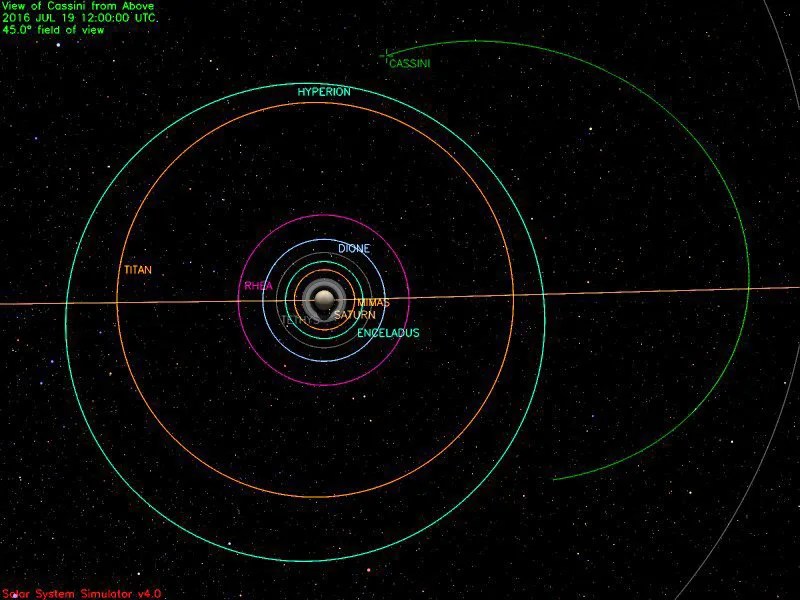3 min read
Cassini is orbiting Saturn with a period of 23.9 days in a plane inclined 43 degrees from the planet's equatorial plane. The most recent spacecraft tracking and telemetry data were obtained on June 29, using the 70-meter diameter Deep Space Network station in Spain. The spacecraft continues to be in an excellent state of health with all of its subsystems operating normally except for the instrument issues described at http://saturn.jpl.nasa.gov/anomalies .
The gas giant planets Jupiter and Saturn seem like miniature solar systems. Indeed, studying them offers clues to scientists about how our solar system, and systems about other stars, were formed. Cassini has been providing one of many perspectives on exploration of the solar system, as discussed in a news feature released this week: /news/12921/nasa-sails-full-speed-ahead-in-solar-system-exploration .
Wednesday, July 13 (DOY 195)
Instrument calibrations are always an important part of scientific observations. All of Cassini's instruments carry out different kinds of calibrations frequently, even though they usually do not appear in these pages. Today the Ultraviolet Imaging Spectrograph did a 19-hour calibration activity using the bright blue star Spica, or Alpha Virginis. The whirling double star itself is of astronomical interest, but for UVIS today it just served as a well-characterized single-point source of light at various wavelengths.
Thursday, July 14 (DOY 196)
The Imaging Science Subsystem (ISS) led a 90-minute meteorological monitoring observation of Saturn's largest moon, Titan, while it was about 1.9 million kilometers from Cassini. The Composite Infrared Spectrometer (CIRS) and the Visible and Infrared Mapping Spectrometer (VIMS) participated. Next, ISS and VIMS spent 60 minutes scanning the space close to Saturn for small objects as part of the satellite orbit campaign. This pair of observations repeated on Saturday.
Friday, July 15 (DOY 197)
UVIS spent 13.5 hours making mosaic scans of Saturn, its magnetosphere and its rings.
Saturday, July 16 (DOY 198)
ISS and VIMS rode along today with UVIS's scan, which lasted 11 hours, but was otherwise similar to the one the day before.
Sunday, July 17 (DOY 199)
Commands that were uplinked two days before executed Orbit Trim Maneuver (OTM)-453 today. Following orders, the spacecraft turned and fired its main rocket engine. After burning fuel and oxidizer for 11.5 seconds, it shut off, and turned to point its high-gain antenna back towards Earth. This maneuver provided the 2.0 meter-per-second change in velocity to target for the upcoming Titan T-121 close encounter.
With the OTM successfully completed, UVIS returned to the business of making mosaic scans of the Saturn system. Today's lasted 15 hours.
Monday, July 18 (DOY 200)
Today's 12-hour UVIS observation was the final mosaic scan of the 217 hour campaign, which began on July 3.
Tuesday, July 19 (DOY 201)
VIMS observed the red star Antares, Alpha Scorpii, for 10.3 hours today while it was being occulted by Saturn's rings. ISS and CIRS rode along. This illustration shows Cassini's extraordinary view, with Antares visible within the Cassini Division between the A and B rings.
Aside from occultations and calibrations and optical navigation images, stars are usually not part of what ISS is looking for. This is discussed along with this week's featured image: /resources/17391 .
The Deep Space Network communicated with and tracked Cassini seven times this week, using stations in California and Australia. A total of 159 individual commands were uplinked, and about 1,430 megabytes of telemetry data were downlinked and captured at rates as high as 142,201 bits per second.
An illustration of Cassini's path up to mid-day July 19, 2016.








